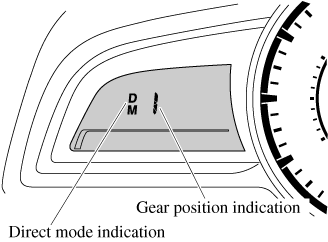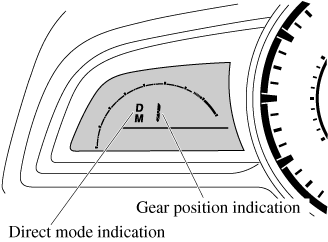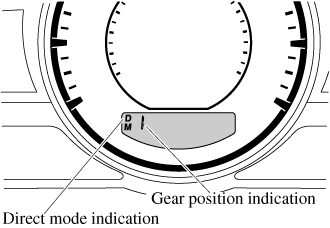Direct Mode (Some Models)
Direct mode can be used for temporarily switching gears by operating the steering shift switch while the vehicle is being driven with the selector lever in the D range.
While in direct mode, the D and M indication illuminate and the gear position in use is illuminated.
Direct mode is cancelled (released) under the following conditions.
-
The UP switch (
 ) is pulled rearward for a certain amount of time or longer.
) is pulled rearward for a certain amount of time or longer. -
The vehicle is driven for a certain amount of time or longer (time differs depending on the driving conditions while operating).
-
The vehicle is stopped or moving at a slow speed.
Type A

Type B

Type C

Shifting up and down while in direct mode may not be possible depending on the vehicle speed. In addition, because direct mode is cancelled (released) depending on the rate of acceleration or if the accelerator is fully depressed, use of the manual shift mode is recommended if you need to drive the vehicle in a particular gear for long periods.




 Read this first
Read this first



















